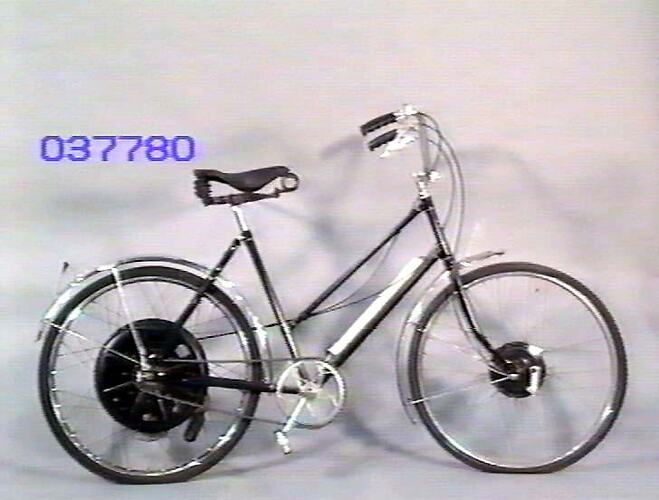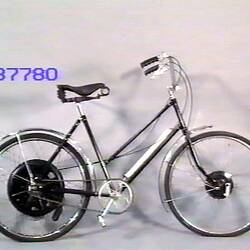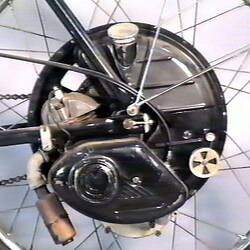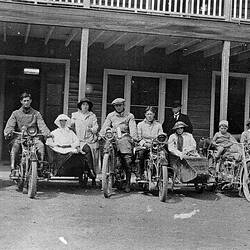Summary
Alfred George Healing established a business in Bridge Road Richmond in 1896 initially as an agency for the London-based Haddon Cycle Company. By 1902, the A.G. Healing Ltd name appeared with an address in Niagara Lane, Melbourne. The company began importing FN motor cyles in 1903 and also marketed its own motor cycle under the 'Petrel' brand. In 1910, John 'Bert' Rhodes was appointed as Manager and the firm expanded its range of local and imported motor cycle components and engines including Peerless and Precision brand motor cycles as well as imported Fafnir, American De Luxe and (after 1918) JAP engines. By the end of the First World War, Healings had become the largest motor cycle business in Australia. Their Healing bicycle brand was also well-known.
By the 1930s the company had diversifed into domestic goods, especially household radios and motor cycle manufacture ceased. Just after World War II, the company produced a powered version of its bicycle using a 30 c.c Wayco two-stroke engine mounted over the rear wheel. This small engine had an oil-filled clutch. This 'auto cycle' concept was popular in the UK and Europe at the time as cars and motor cycles were expensive and hard to obtain. Petrol rationing also stayed in force until 1949 in Australia. The arrival of cheaper mopeds, scooters and cars in the 1950s soon made the auto cycle hard to sell and it largely disappeared. Healings became a major local manufacturer of television sets and whitegoods.
This A.G. Healing Auto Cycle was purchased by the Museum in 1986. Its last owner was John Nestor of Balaclava in Melbourne.
More Information
-
Collection Names
-
Collecting Areas
-
Acquisition Information
Purchase
-
Manufacturer
-
Classification
-
Category
-
Discipline
-
Type of item
-
Overall Dimensions
1750 mm (Length), 520 mm (Width), 1100 mm (Height)
-
Keywords




